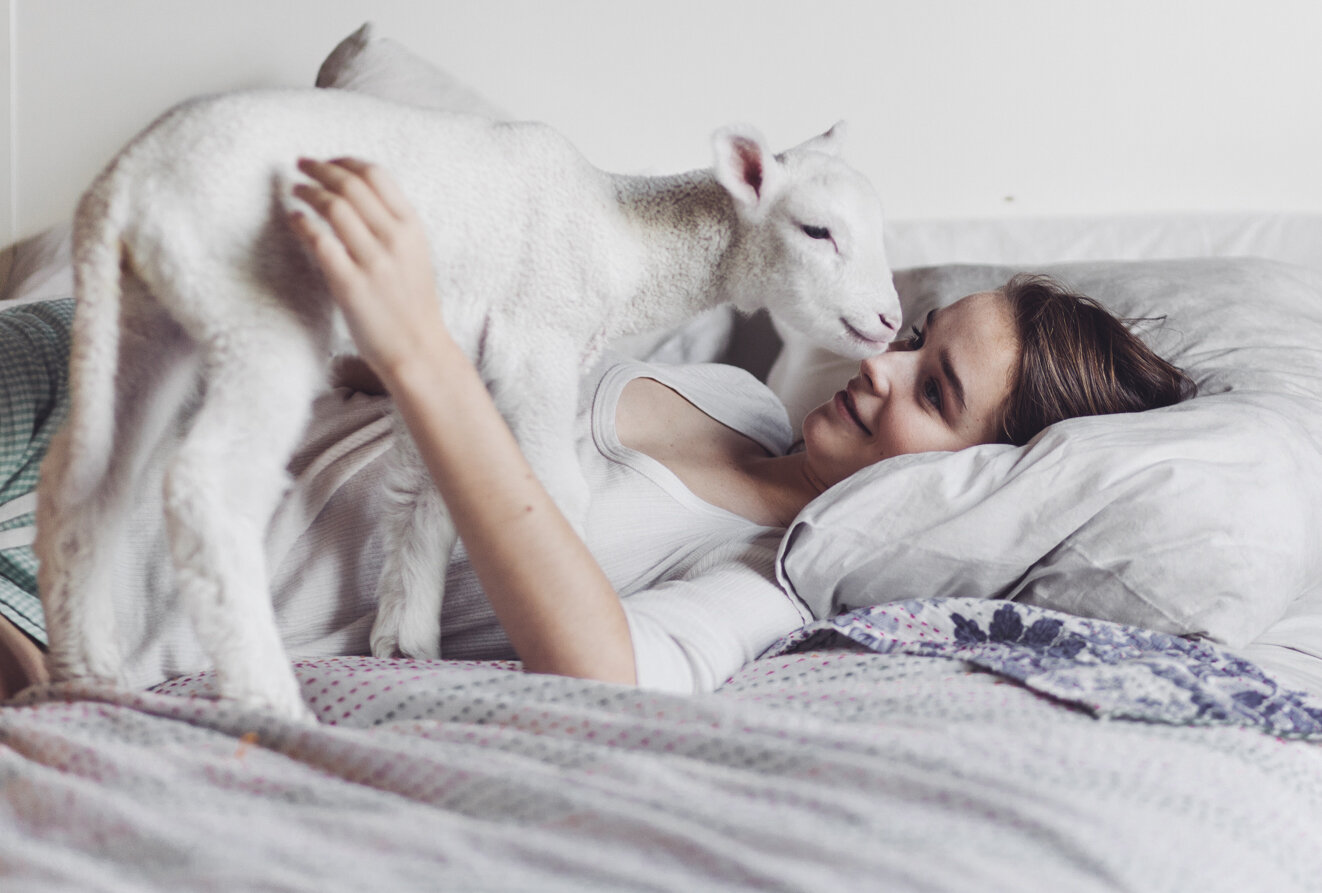Mutilation
Farmed animals are exempt from Australian animal protection laws, and any codes of practice regarding the treatment of lambs and sheep are only recommendations. In Australia it is legal, industry standard practice to cut off or otherwise sever lambs’ tails and testicles. It is also still legal to mulese sheep, meaning to slice the skin around their backside off. Sheep that are shorn are often treated violently, with a disregard for their wellbeing.
Please note the last image on this page is graphic and may be distressing.
Lack of legal protection
Despite lambs and sheep having the exact same capacity to feel pain and suffer as puppies and dogs or kittens and cats, Australian laws do not protect them in the same way.
The Australian Prevention of Cruelty to Animals Act (POCTA) states that an act of cruelty that ‘wounds’, ‘mutilates’, ‘abuses’, ‘worries, torments or terrifies an animal’ is an offence. However, it also states that ‘any act or practice with respect to the farming… or killing of any farm animal’ is not relevant to the act.
There are Codes of Practice for the treatment of farmed animals, but such codes, like those relevant to sheep, are not yet mandatory to follow. For this reason, violence and abuse against sheep is legal.
Tail docking
Tail docking, where a lamb’s tail is cut off or otherwise severed, is standard farming practice. The most common and recommended methods in Australia are cutting lamb’s tails off with a sharp or hot knife, and using tight rubber rings which cut off circulation to the tail, until the nerves slowly die and the tail drops off.
Tail docking young lambs without pain relief is legal.
Tail docking is performed to prevent fly strike, a parasitic condition. Rescue animal sanctuaries in Australia do not dock tails, instead regularly crutching sheep (shearing the wool around their backsides and on the tails). While this method prevents flystrike just as effectively, it is more costly and time-consuming, which is why the wool and meat industry docks tails instead.
Willow and her free-from-harm tail, captured by Rachael Michelle.
Castration
Male sheep are castrated to prevent unplanned breeding, which may result in untimely births, or lambs with a ‘lesser quality’ genetic makeup.
The most common and recommended methods in Australia are slicing the lamb’s scrotum open and cutting out their testicles with a sharp knife, or using tight rubber rings which cut off the circulation to the testicles, until the nerves slowly die.
Again, no pain relief is legally required for castrating young lambs.
A ‘lamb marking knife’ with a ‘testicle removing hook’.
Mulesing
Mulesing is a widely-known mutilation subjected to sheep. To mulese is to slice off the skin around a lamb’s backside.
Like tail docking, mulesing is performed to prevent fly strike, but it is a barbaric practice rendered needless by crutching.
In Australia, mulesing without pain relief is legal in all jurisdictions except for Victoria, though documentation shows this is not always followed. While this legislation should reduce suffering, we would never deem it acceptable or ethical for a cat or dog to have their skin cut off of their backside.
In 2020, a bill attempting to ban mulesing in NSW was rejected by the state parliament. When discussing a potential change in regulations surrounding mulesing, the chairman of the NSW Farmers Wool Committee, stated ‘The concern is, where will this demand for pain relief stop?’. His greatest concern was about ‘people telling us what we should be doing on our properties’.
Image: Patty Mark
Shearing violence
Rather than being paid by the hour, shearers are normally paid by the number of animals they shear, or by wool weight. Being paid this way incentivises speed and leads to both extreme occupational health and safety concerns and violence towards sheep.
Across five years, multiple global investigations, including in Australia, have shown rampant cruelty in the process of sheep shearing. Not only are animals seen regularly cut by the shearing clippers, but also sewn back together without pain relief by untrained workers. They are seen beaten, punched and thrown, some with their heads being stood on by workers. With no real regulation, this abuse continues unchecked.
Sheep only need to be shorn because we have selectively bred and even in some cases genetically modified them to produce more wool for our profit. Sheep originated from mouflon, a wild animal who of course is never shorn, and lives perfectly well.
Image: People for the Ethical Treatment of Animals
References
POCTA states that an act of cruelty such as to wound, mutilate, abuse… torment or terrify an animal is an offence
Prevention of Cruelty to Animals Act: Section 9
However, it states that ‘any act or practice with respect to the farming… or killing of any farm animal’ is not relevant to the act
Prevention of Cruelty to Animals Act: Section 6
Codes of Practice for the treatment of farmed animals…are not mandatory to follow
Agriculture Victoria
The most common and recommended methods of tail docking are with a sharp or hot knife, and tight rubber rings
Animal Welfare Standards & Guidelines 1, 2
Tail docking lambs without pain relief is legal
Animal Welfare Standards & Guidelines
Male sheep are castrated to prevent unplanned breeding
Meat and Livestock Australia
The most common and recommended methods of castration are cutting the testicles with a knife, or using tight rubber rings Animal Welfare Standards & Guidelines 1, 2
In Australia, it is still legal for young lambs to be mulesed without pain relief
Animal Welfare Standards & Guidelines
Australian law on mulesing
ABC, The Courier
Shearers are normally paid by the number of animals they shear
NSW Farmers: Growing The Best
Extreme work-safe concerns for shearers
ABC
…multiple global investigations, including in Australia, have shown rampant cruelty in the process of sheep shearing
Peta 1, 2 (graphic)
Sheep originated from mouflon, a wild animal who of course is never shorn
Science Direct





